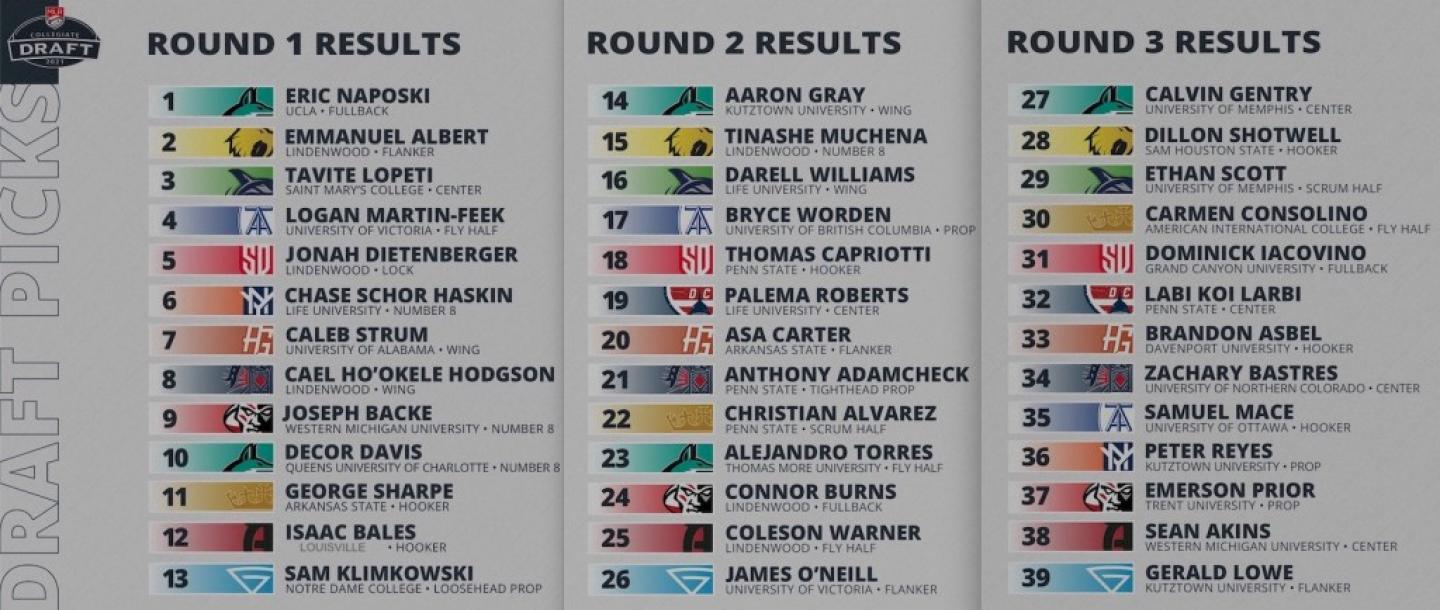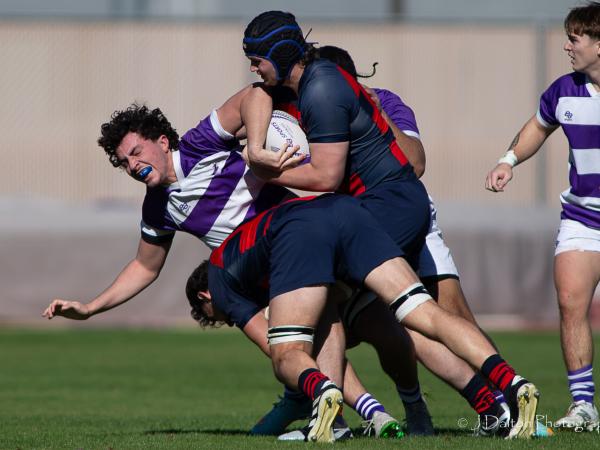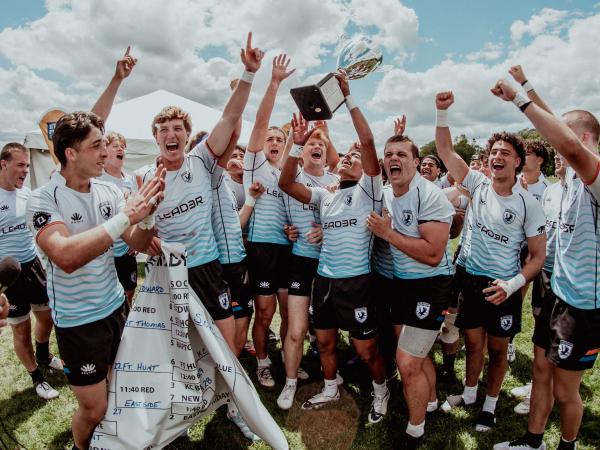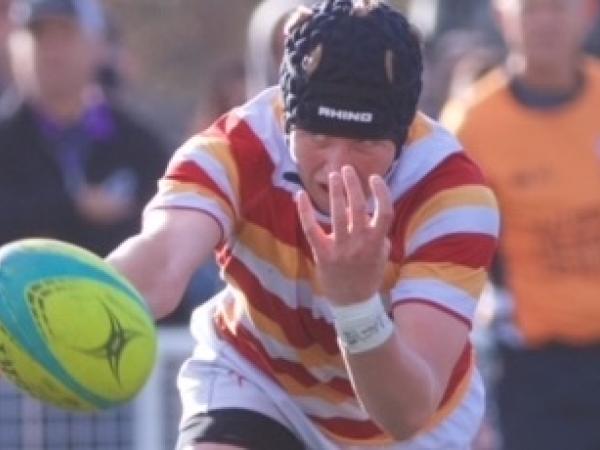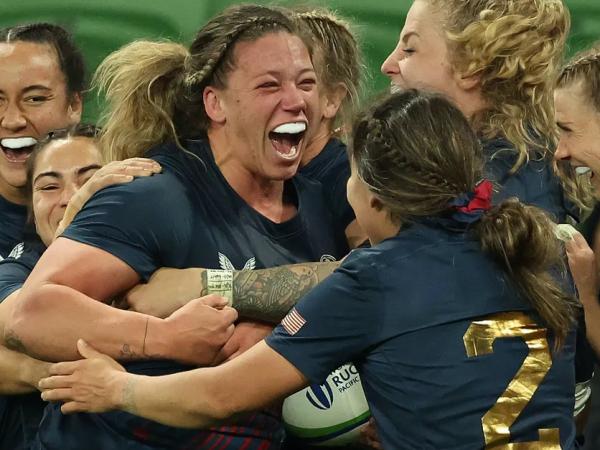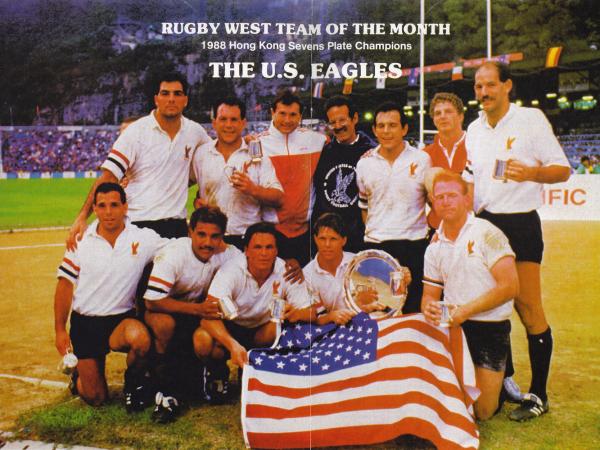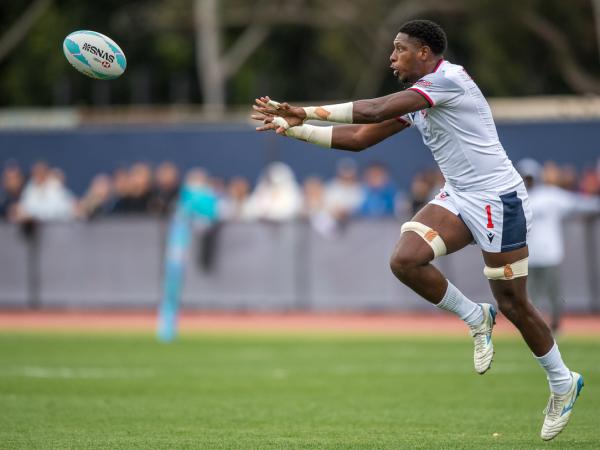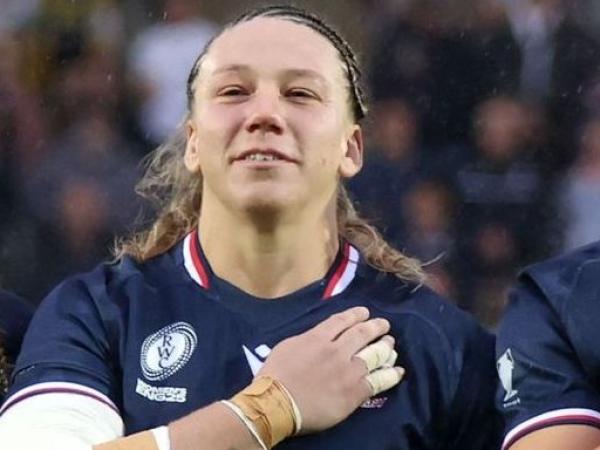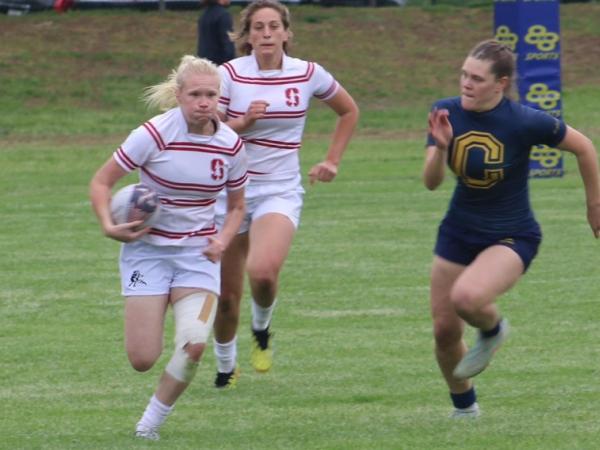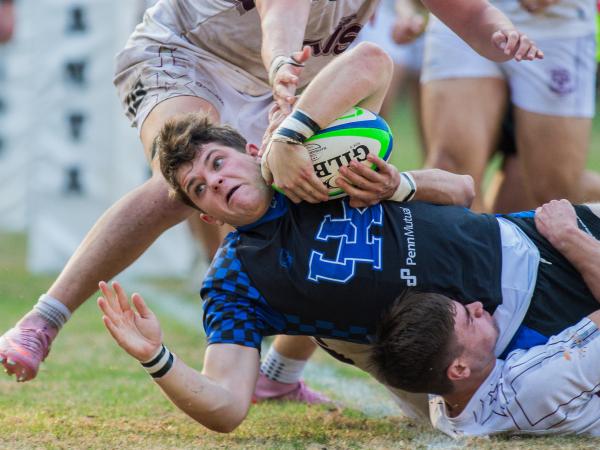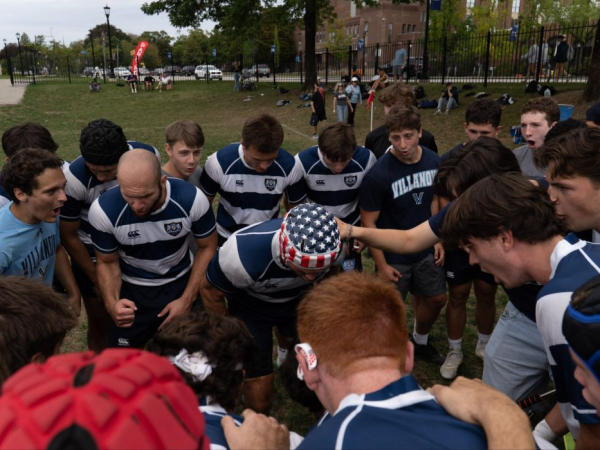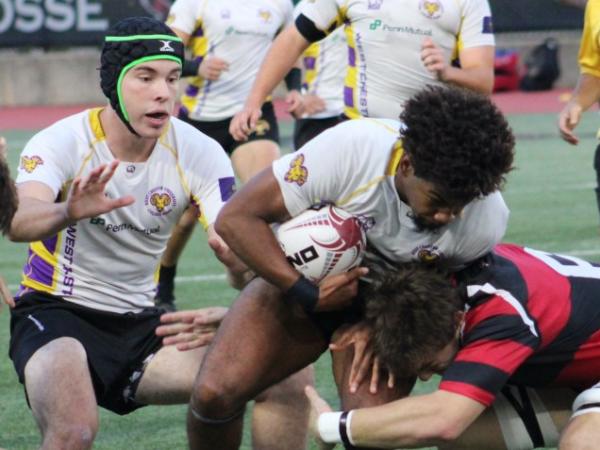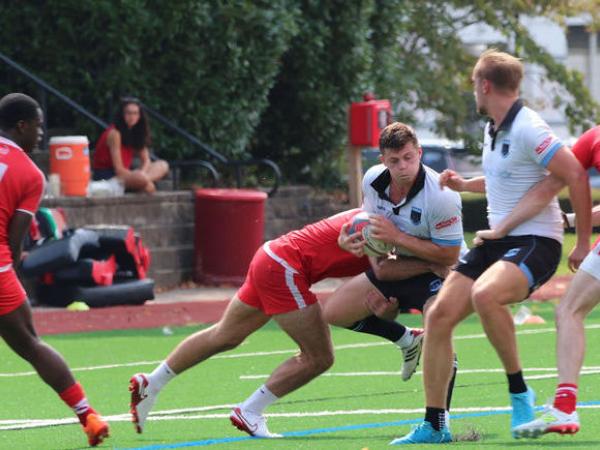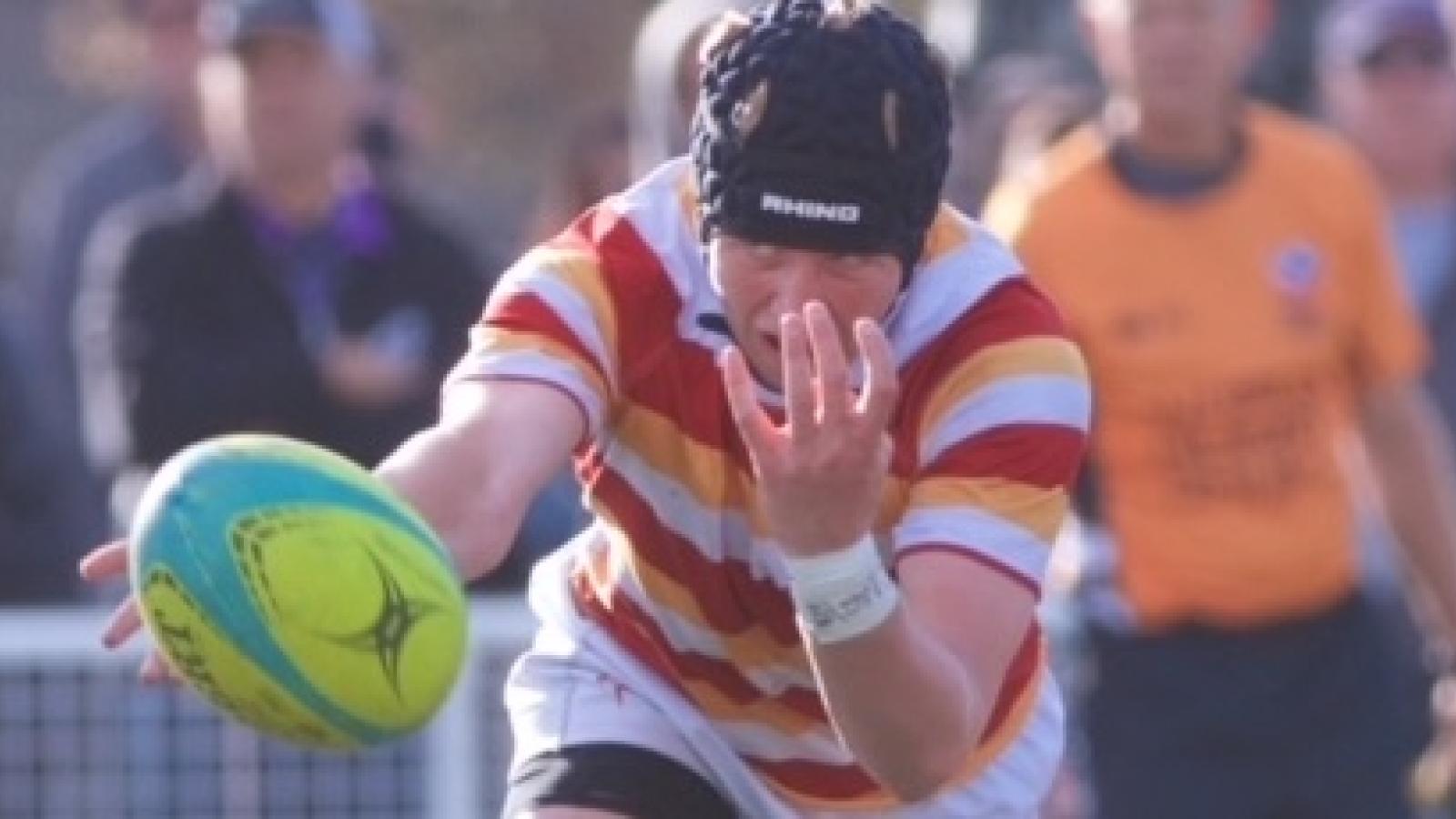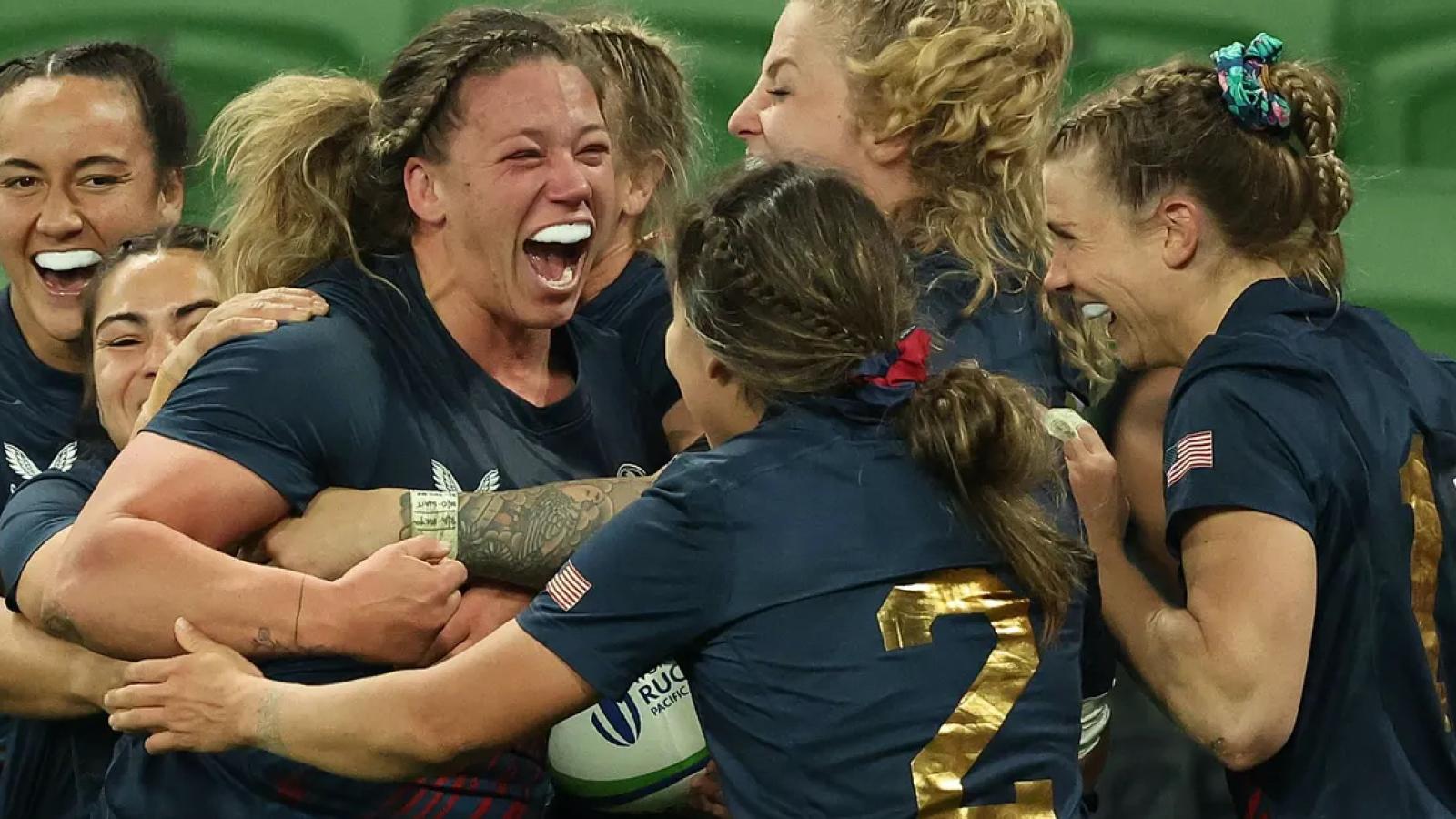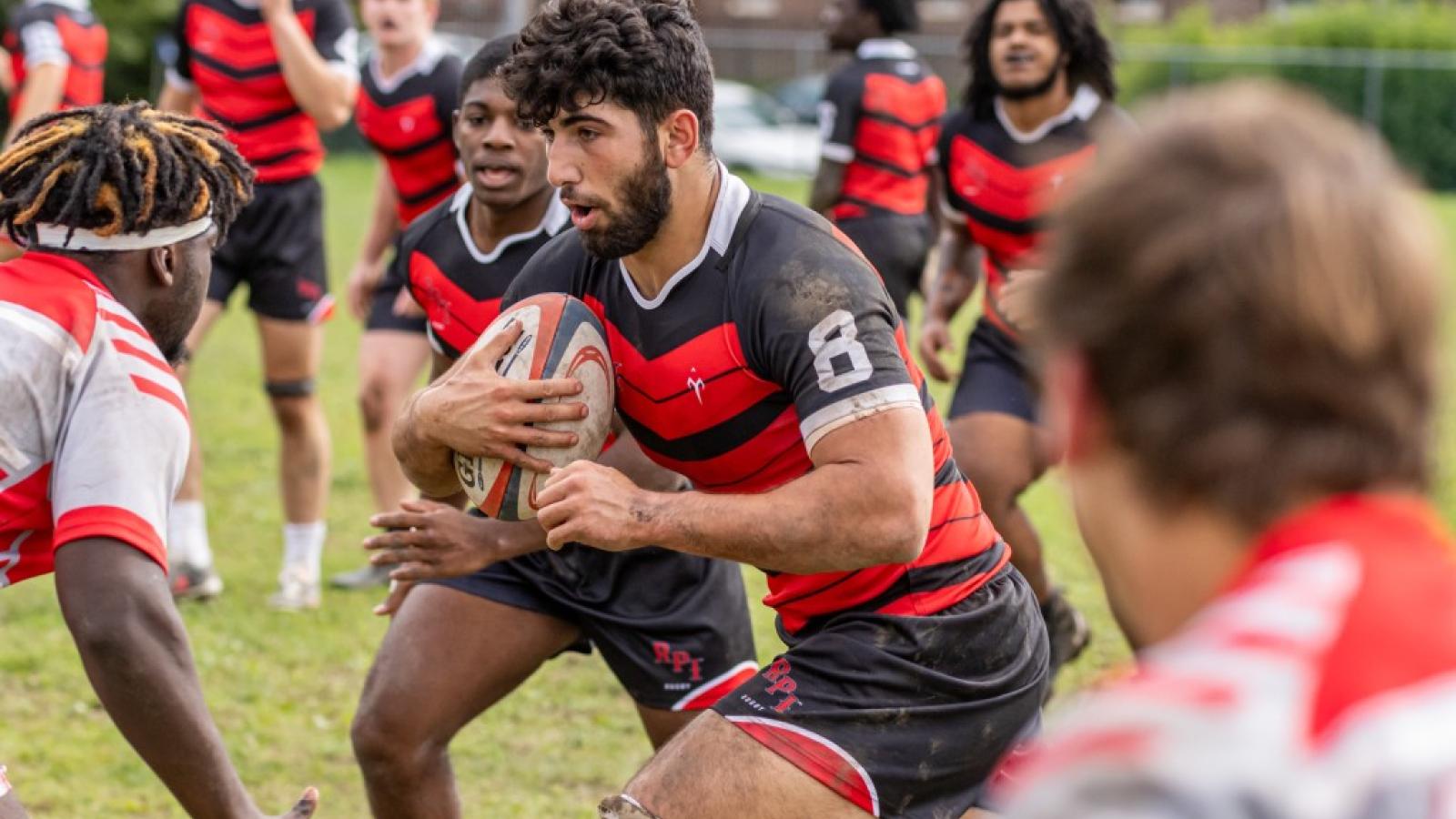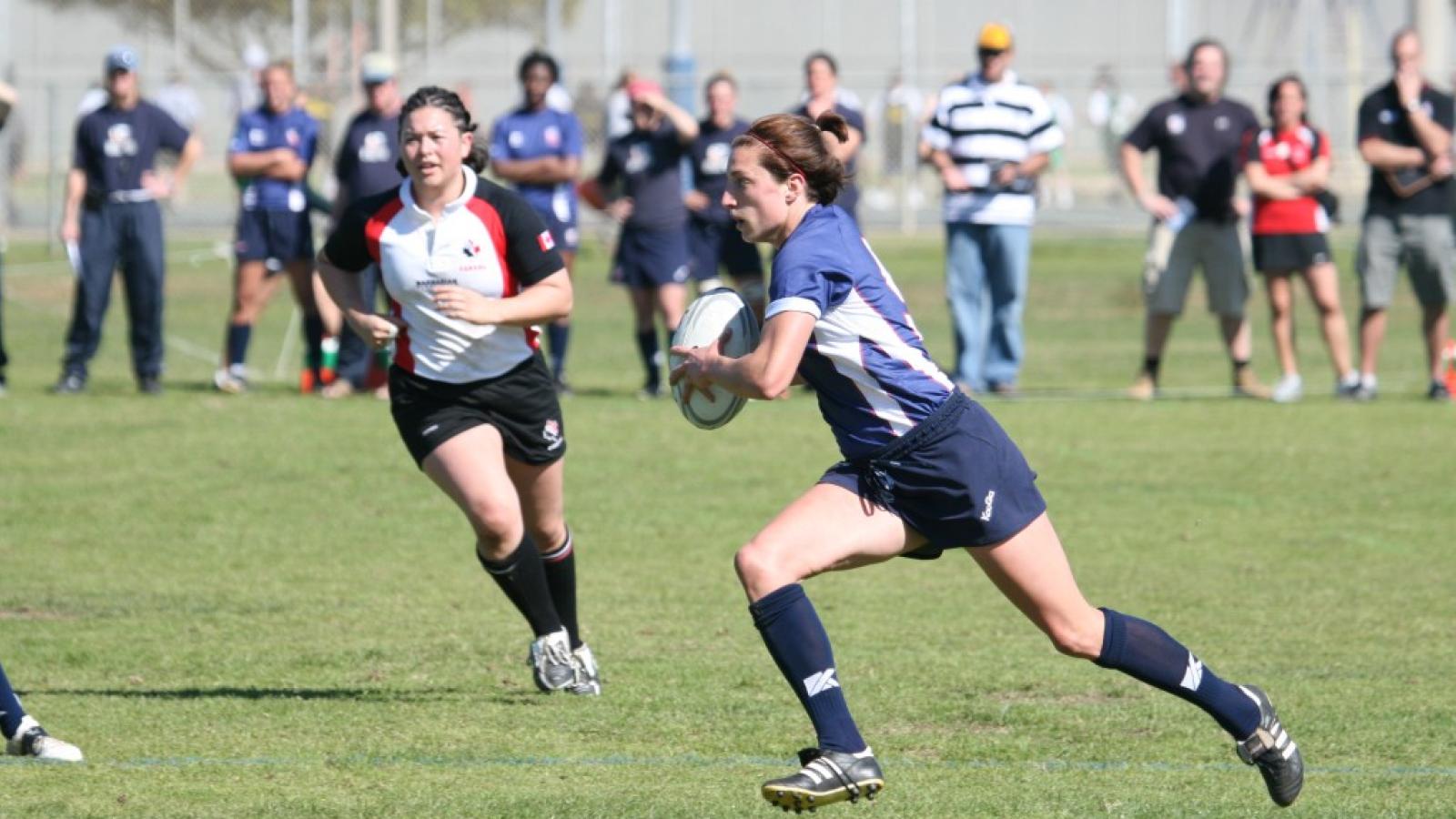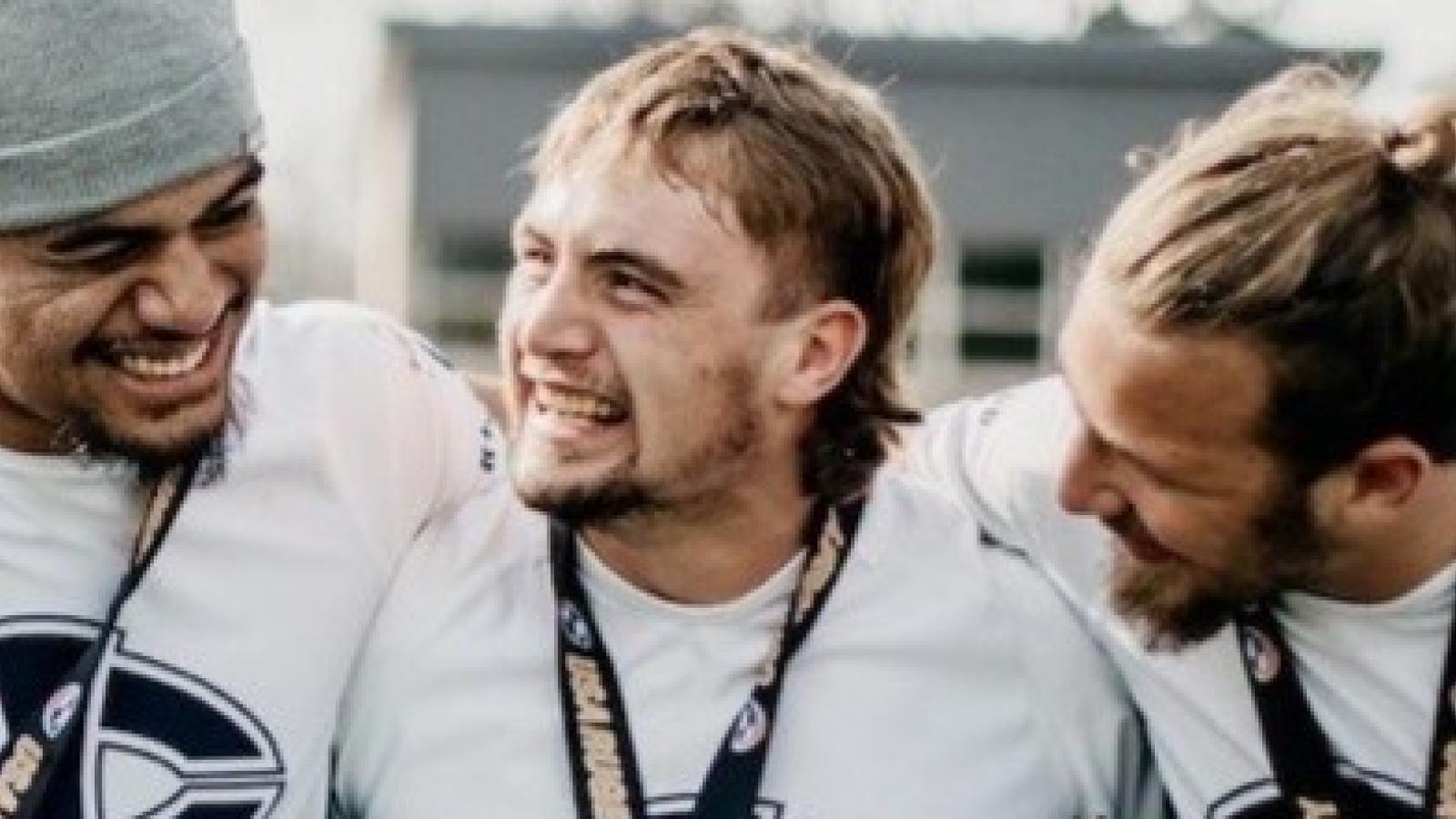Who won the MLR Draft?
Well, as usual with any professional league draft, we will find out years down the road. We don't know which players will get injured and retire 24 months from now, and which players will slowly improve their craft and be a starter for 14 years.
But, we can have a look at how the draft appears to address team needs, and whether we agree with a team's decision-making. One warning, however. We're not interested in running down any players. While we've already made our opinions known about who are the players we thought were strongest, our judgments below will be more about whether a team's draft strategy was coherent, whether the types of players fit the need, and whether the drafted player's competitive experience sets him up for success.
Following the Playbook
Struggling in league play the Houston SabreCats made what we could consider some smart and safe—in a good way—decisions. They took Scholz Award-winner Emmanuel Albert in in Round 1 as the #2 overall pick, a player who can patrol lock or flanker, who can defend, clear rucks, and win lineouts. For a team that isn't getting enough secure ball and isn't setting the platform, this was a pick we can consider both insightful and yet a no-brainer.
For Round 2 Houston took a bit of a risk in that they committed a foreign player roster spot on Tinashe Muchena. But as we said about Muchena, he is probably the one player who should have no reservations about in that regard. The Lindenwood No. 8 is a strong leader, talented back row forward, hardworking, and highly intelligent. So no problems there. Basically you've committed a foreigner spot to a guy who could easily become a starter right off the bat.
In Round 3, Houston took a hooker, which is usually a good pick and was the Pick du Jour of Draft Day with as many as seven potential #2s getting the nod. The knock on Dillon Shotwell is that some suspect his fitness, and he hasn't played against especially tough competition on a regular basis. Still, he's a relatively local player (Sam Houston State is only a 90-minute drive from Houston's Aveva Stadium) and getting a player fit (if that is an issue) shouldn't too much trouble. Getting a local player is a smart move.
Toronto did exactly what you'd expect (except that we thought they'd go for Emerson Prior). They drafted three very capable Canadian players, including a mature and talented flyhalf and two very good front-rowers (two of those players were from colleges is British Columbia). They even traded down in Round 3 knowing who they wanted (University of Ottawa hooker Samuel Mace) and being reasonably sure no one else was going to take him.
Knocking it out of the Park
San Diego went almost the way we'd recommend. They took a lock, the high work-rate Jonah Dietenberger, in Round 1, and an experienced D1A hooker in Tom Capriotti in Round 2. Then they took a bit of a leap of faith on an outside back, one who is from the greater San Diego area. Signing Dominick Iacovino won't be a big hardship for team or player even if it doesn't work out. Iacovino won't have to make a big move and he's in a position to learn and grow and get there in due time.
Trading Day
Once again RUNY worked some trades around the draft. Last year they traded away all of their picks, which, to be honest, didn't look good in terms of making a show of supporting the domestic game. Post-draft signings demonstrated that RUNY still had its eye locally, and this time they really only traded away net one pick. RUNY traded up in Round 1, then traded their extra Round 1 and their Round 2 to to Dallas, and kept their Round 3. Their picks, Chase Schor Haskin, and Peter Reyes, are very smart choices. Reyes can play prop or flanker (and maybe hooker some day?) and he is a good physical presence. Haskin is a very capable No. 8 who can work on the flank on either side, too.
So, really, job done for New York.
We might count the result of Old Glory DC's trade of their opening round pick as part of their draft. That's a tough one because we don't have the details of the trade between RUNY and Dallas for their two picks. But if we do bring that trade into play then DC for a very capable finisher in former Kutztown flyer Dmontae Noble for that pick, and then followed that up with Palema Roberts in the 2nd Round and Labi Koi Larbi in the 3rd Round. Now, this is an all-back list, but it's a good list. DC had to be pretty thrilled to see Roberts still available at the 19th overall pick. He's a powerful addition to their center/wing group and Koi Larbi is a brick shed who is just as impressive.
Weird stuff? Every fullback for DC is an overseas player, and with limits on foreign players, sometimes you need some flexibility. Old Glory probably could use another scrumhalf, another flanker, and another tighthead, but this trio of players (if you include Noble) is as impressive a group of attacking players as you're likely to see.
It's pretty clear RUNY and Old Glory got exactly what they wanted.
What Were They Thinking?
An explanation on the above subhead. We aren't saying in a way that is incredulous (OK, sometimes we are). Most of the time we just want to explore, in a more open-minded way, the question of what a team's thinking was. When we don't like their conclusions, we'll let you know.
Well for the Austin Gilgronis and their new GM Dave Hodges, there was a specific plan. They wanted an attacking threat so they went with an outside back. (One thing about going for more wings and fullbacks than we expected was the shift in global laws that adds a new dimension to the kicking game. Players who can run and counterattack and defend and kick in open play are important.) Caleb Strum's rangy frame, his ability to mix it up as a center, his ability to win ball in the air, and his acceleration all make him an intriguing pick. For Round 2 Austin knew they wanted a big forward and while Asa Carter is listed as a flanker, he's just as much a lock and can fill ably right now at both positions.
So that left them with a bit of a risk available in Round 3 (something common among Round 3 choices), and here they found a player whose numbers at the Rugby Showcase were really strong, and whose coaches said had a high work ethic. Physically impressive, hooker Brandon Asbel has the markings of a draft coup for Austin.
New England was pretty conventional. As we noted after our videos, Cael Ho'okele Hodgson out of Lindenwood actually has dual citizenship and so won't cost the Free Jacks a foreigner spot. Hodgson is listed as a wing but he's just as much a center. Where Strum is long-legged and a stride Hodgson is more of a power runner and a basher. OK, so, yes, another outside back, but still New England then went with the front row in Round 2 Anthony Adamcheck who can scrum, can move around the field, and, basically, knows what he's doing. And once again a Round 3 choice was a leap of faith. Zachary Bastres has played well through high school and college, but a flyhalf out of DII better bring some special skills. The speed of the game is, overall, just very different between DII and DIA. Bastres will have some work to do, and New England will have some work to do to get his decision-making up to MLR speed.
Misdirections and Chess Moves
You remember the scene in the film classic Airplane! when one character asks Robert Stack "Maybe we ought to turn on the searchlights now" and Stack replies: "No ... that's just what they'll be expecting us to do."? That's the Utah Warriors.
You know we think highly of Joey Backe, but we didn't think anyone was listening that closely. Backe, we figured, would go 2nd or 3rd Round and would be an excellent pickup for anyone smart enough to choose him there. Maybe the Warriors worried they couldn't wait that long and nabbed him in the 1st Round. So they got a smart forward who could play probably 6, 7, 8, and 2. Then they rolled for a foreign player, Connor Burns (another rangy, multi-skilled outside back who can handle and deliver the kicks). And then they were the only US-based team to nab a Canadian, shooting for Emerson Prior, the Trent University prop who we think will be very useful. In the end no one was looking the direction they were looking.
Los Angeles had to feel like they outsmarted everyone when maybe it was everyone who outsmarted themselves. They had to be disbelieving that some of these players were available. Sam Klimkowski is a big guy, and maybe some were worried he has too big. But he can move, and he's proved that for Notre Dame College and at the Rugby Showcase. James O'Neill and Gerald Lowe are legit loose forwards. You kind of get the feeling LA was just drifting like a crocodile waiting for an unsuspecting gazelle to wander near the shore.
Atlanta has a strong connection with Life University and yet they drafted no players from there. Why? Well maybe it's because they figured some of those guys would be available to sign later anyway. Like Joey Backe, Louisville's Isaac Bales is a player with immense rugby talent and would do well anywhere. And he's a player who could easily be overlooked. He has been working on his lineout throwing and has developed well as hooker, and while we figured him for a high 2nd Round pick, he ended up a low 1st Round pick and that's fine.
(By the way; the college Bales was listed with on the Draft List was not correct—he's a Louisville guy—and you wonder if some less-well-informed GMs skipped over him because of that.)
Then Rugby ATL went for a domestic flyhalf with DIA experience in Coleson Warner. Warner was the one flyhalf we really thought would be drafted high (we were wrong—Alejandro Torres from Thomas More was drafted higher), and given that Rugby ATL's roster lists only two #10s, and one is hurt, this is an excellent pickup for them. Sean Akins out of Western Michigan is a bit of a leap of faith, but he's older (24), camped with Rugby ATL already, and played well against Life in the CRC 7s, so they liked what they saw in person.
Interestingly, no DIA draft picks for Atlanta.
Umm ... ?
NOLA bucked a few generally accepted approaches (and certainly Goff Rugby Report's own concept of what makes sense). In Round 1 they picked a foreign player. Now, George Sharpe is a very talented hooker and a good player to pick, but he takes up a foreign spot, and most teams have avoided committing to a foreign player in the 1st round (Addendum: Sharpe has been in the USA long enough to probably avoid that issue as he moved to the USA before he was in high school, so likely the foreigner issue is moot). Then they went for a good scrumhalf in Christian Alvarez from Penn State ... and then followed that up with another halfback pick in Carmen Consolino. While Consolino is listed as a flyhalf he's essentially a flyhalf/scrumhalf. So NOLA got two scrumhalves despite having four (!) already on their roster.
Seattle was all over the place. They chose the best back in the draft at #3 and that makes sense. We see Tavite Lopeti and Aaron Matthews reunited. Darell Williams is an interesting pick because he really wasn't on a lot of radars. He was MVP of the National Small College Rugby Organization all-star tournament in 2018, when he was playing for San Francisco Community College. He then had a cup of coffee with Life University playing for the men's side and the undergraduate side (but, curiously, not listed on either roster). It's possibly a great pick—a player who is under the radar but undoubtedly athletic—but it's a third-round pick, not a second-round pick.
For their third round, Seattle went the other direction, and got a player with a pedigree and an easily-trackable rugby life through high school and college. While scrumhalf Ethan Scott wasn't in DIA, he was with Memphis, he is a knowledgeable, skillful #9. If you're not going to take a leap of faith in the 3rd Round, you take someone like this.
Dallas bucked all the conventional wisdoms. After smartly trading to get five picks instead of three, they used four of them on backs. One of those was for a foreign player playing for a DII/Small College team. They picked a really talented wing/fullback for #1 overall, but Eric Naposki was probably going to be available at pick #10 or #14 (which Dallas had). They chose a bit of an experiment at #10 in Decor Davis, a power-running forward who says he's a No. 8 but is really either a #6 or, potentially, a hooker. They picked Aaron Gray, who is superb, at #14, Alejandro Torres (flyhalf, Thomas More) at #23, and then must have been happy to see Calvin Gentry still available as the top pick of the 3rd Round.
But ... for us these picks don't make a lot of sense. If you're starting a team from scratch you have to get your tight five sorted out. Trading so you can get five picks is a great move. Using four of them for backs, no matter how good they are, is not.
| Our MLR Draft Matrix | |||
| Team | Round 1 | Round 2 | Round 3 |
| Atlanta | Experienced tight five | Accomplished back with skills | A diamond in the rough |
| Austin | Accomplished back with skills | Experienced tight five | A diamond in the rough |
| Dallas | Accomplished back with skills | Accomplished back with skills | Accomplished back with skills |
| Dallas 2nd Line | A diamond in the rough | Unproven halfback | — |
| DC | — | Accomplished back with skills | Accomplished back with skills |
| Houston | Experienced tight five | Highly Regarded Foreign Player | Local talent |
| Los Angeles | Experienced tight five | Highly Regarded Foreign Player | Highly Regarded Foreign Player |
| New England | Accomplished back with skills | Experienced tight five | Unproven halfback |
| New Orleans | Highly Regarded Foreign Player | Accomplished back with skills | Accomplished back with skills |
| New York | Highly Regarded Loose Forward | — | Highly Regarded Loose Forward |
| San Diego | Experienced tight five | Experienced tight five | Local talent |
| Seattle | Accomplished back with skills | A diamond in the rough | A diamond in the rough |
| Toronto | Accomplished back with skills | Experienced tight five | Experienced tight five |
| Utah | Highly Regarded Loose Forward | Accomplished back with skills | Experienced tight five |





